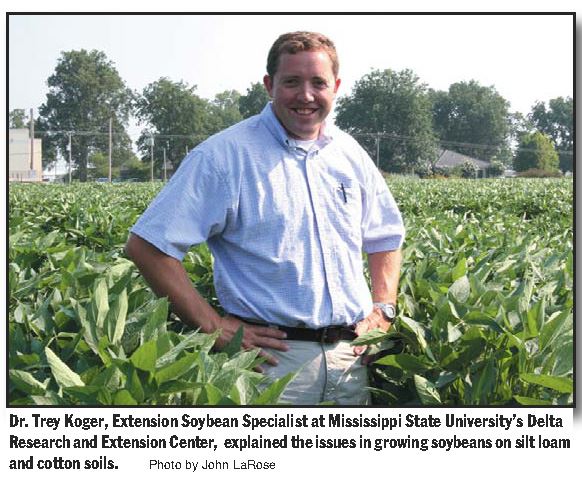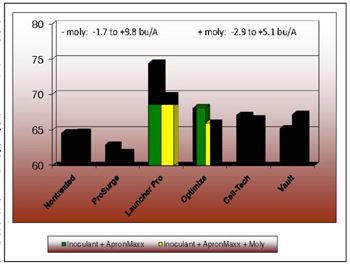Research In Progress: Inoculants May Help Soybeans Produce Nitrogen
STONEVILLE, MISS.
Dr. Trey Koger, Extension Soybean Specialist at Mississippi State University’s Delta Research and Extension Center, says that the biggest issue that they have dealt with last soybean production season is the transition of growing soybeans on silt loam soils and cotton soils.
“Statewide, 30 to 35 percent of our 2.2 million acres of soybeans were planted on soils that likely were never planted with soybeans,or if they had it had been a while,” said Koger.
“It doesn’t have a history of soybean production so in those scenarios we are having a lot of issues with soybeans not producing nodules so that they can produce their own nitrogen,” said Koger.
According to Koger, these situations have been isolated to the silt loam or sandy loam soils. Koger states that in 99 percent of the cases they used inoculants, but for a variety of reasons the plants produced little or no nodules.
“We had to go in and determine whether there was need to put fertilizer on the soybeans. A lot of that depends on the status of the crop, irrigated versus non-irrigated, and what the potential for economic return would be,” said Koger.
“We also know that once we do that, we basically have to spoon feed that plant for the remainder of the season. This means that we would probably have to come back with a second application if the yield potential was there,” said Koger.
“Everywhere that we put out fertilizer the bean crop improved,” said Koger, “but is that economical? We don’t know yet if it is worth it since fertilizer prices are so high.”
“This problem was compounded last year due to the extremely dry weather that we experienced,” said Koger, “we had gotten some rains but not nearly enough. Water brought our soybean plants out of the yellow discoloration where they had developed nitrogen deficiency.
”Koger states that at a lot of places where the soybeans were dry and had no nodules, they watered the plants and checked on them every week.
“They produced some nodules,”said Koger, “and the next week we checked on them they were producing even more. They brought themselves out of it, in a lot of cases where we didn’t even have to put fertilizer on them.”
“We discovered last year the dry weather compounded the problem and we have learned to deal with the issue to a large extent,” said Koger.
Koger hopes that this year, he will have some answers for farmers so that they can realize ahead of time issues that they might have.
“It all stems back from knowing the type of inoculants to use and how to apply it,” said Koger.
“Liquid inoculants are put on the seed,” said Koger, “we have had more problems with one liquid one in particular than others. Timing of application of a liquid inoculants and fungicide seed treatments are the issues to deal with.”
“We will have updates on our research and information on inoculants in trial for farmers to go over,” said Koger.
Koger provided the following soybean yield chart for readers. Δ
KRISTEN JOHNSON: Associate Editor, MidAmerica Farmer Grower

